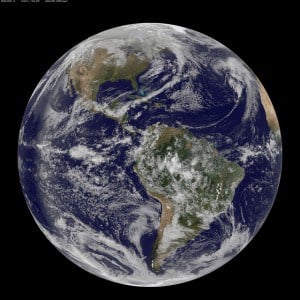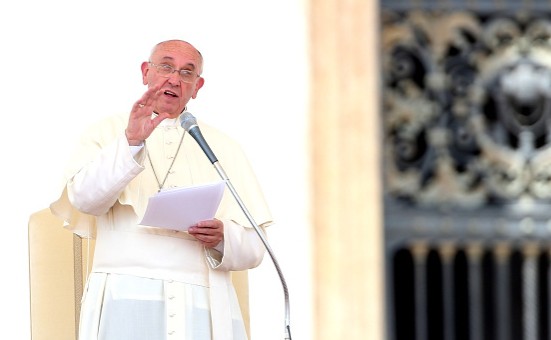An “urgent challenge to protect our common home … to bring the whole human family together to seek a sustainable and integral development, for we know that things can change” [13].
Thus introduces Pope Francis’s plea of Laudato Si, a text of such landmark significance that it may well become one of the most important sources of Catholic Social Teaching since its inception with Pope Leo XIII’s Rerum Novarum in 1891. Both the title of the encyclical (“On Care for Our Common Home”) and its opening quote from St. Francis’s canticle establish the focus of this text.
It’s all about relationships.
In the introductory section, Francis, following his thirteenth-century namesake, calls the earth our “common home”, which is like our sister and our mother. But we are damaging this familial relationship as we harm the environment. In so doing, we are damaging our relationship with other humans, particularly those least equipped to defend themselves: the poor and future generations. We are forgetting our interconnectedness with the earth and with those around and ahead of us who depend on our good stewardship of the gift of creation.
Given the universal nature of our common home, Francis makes it clear that the encyclical is addressed to not only members of the Church but is a vehicle to “enter into dialogue” with all people who are “united by the same concern” [3, 7].
Such a wide target audience explains the immense range of sources the encyclical draws on. The document looks to St. Francis of Assisi and St. Bonaventure, as well as St. Thomas Aquinas, but also to Eastern Christian traditions. It even quotes a Sufi Mystic. Twentieth-century thinkers Teilhard de Chardin and Romano Guardini deserve special mention. Secular documents such as the Rio Declaration from 1992 and the 2000 Earth Charter are referred to as well. The reader is also struck by the many references to previous papal writings, particularly those of St. John Paul II and Benedict XVI. The relationship between Francis and his predecessors on ecology is strong.
After a comprehensive introduction, the encyclical divides into six chapters, each examining different aspects of the rupture between humans and creation and the prospects for healing this relationship.
The first chapter, “What Is Happening to Our Common Home”, looks at the various symptoms of environmental degradation. The impacts of climate change are considered alongside issues of the depletion of freshwater and loss of biodiversity. There is no substantial discussion of the science of global warming; instead, it simply points to the overwhelming consensus concerning the negative impact of carbon-intensive economies on the natural world and human life: “Caring for ecosystems demands farsightedness, since no one looking for quick and easy profit is truly interested in their preservation” [36].
The encyclical firmly posits that a truly ecological approach is also inherently social – an approach that simultaneously hears the cry of the earth and the cry of the poor. The social and environmental impacts of mining is cited as a prime example of this. In many places within the text, Francis lauds the achievements of the environmental movement, while at the same time, he critiques elements within it. He forthrightly dismisses the idea that population growth is to blame for environmental damage; such a suggestion is often a way of refusing to reduce overconsumption by the affluent. Later on, the encyclical states that abortion can never be viewed as a justification for the protection of nature.
The second chapter, “The Gospel of Creation”, considers the world the way that God intended it. The chapter surveys the rich scriptural traditions to show that there is no biblical justification for “a tyrannical anthropocentrism unconcerned for other creatures.” [68]. Likewise, there is no room for misanthropic versions of environmentalism since reverence for nature is only authentic if we have compassion for fellow humans. A person who is truly concerned about the trafficking of endangered species is automatically concerned with the trafficking of humans.

Credit: NOAA/NASA GOES Project
The third chapter, “The Human Roots of the Ecological Crisis”, examines the twin notions of what it calls the “technocratic paradigm” and a “modern anthropocentrism” borne out of a view that sees nature as a mere given, devoid of any spiritual or transcendental value. These notions have led to the misplaced ideas that the earth’s resources are infinite and that economic growth and technology alone can solve global hunger and poverty. In reality, however, a purely materialistic view of reality has not only resulted in disregard for the environment, but also undermined the worth of a human life, especially those forms viewed as having little or no utility – human embryos, the poor, or people with disabilities.
At the heart of consumerist and profit-driven economic ideologies is a wrong-footed idea of dominion. The result is exploitation, and a throwaway attitude towards nature and human life itself. The encyclical calls for a bold cultural revolution in our attitude to development and progress. It puts it rather bluntly: “Nobody is suggesting a return to the Stone Age, but we do need to slow down and look at reality in a different way, to appropriate the positive and sustainable progress which has been made, but also to recover the values and the great goals swept away by our unrestrained delusions of grandeur.” [114].
In the fourth chapter, “Integral Ecology”, the encyclical charts a path to recapture awareness of the interconnectedness of creation. To do so, it is essential to appreciate the impact of environmental degradation on “cultural ecology”, such as those social networks and ways of life which are bound up with the environment in which communities are placed. The experience of indigenous peoples is specifically referred to in this regard.
The fifth chapter, “Lines of Approach and Action”, sets out various international collective actions needed. It highlights the imperative to switch from fossil fuels to renewables, with the use of government subsidies where appropriate. It identifies the need for international agreements and legislation not only in relation to climate change but also biodiversity and the oceans. Carbon credits are criticized as “an expedient which permits maintaining the excessive consumption of some countries and sectors.” [171].
The sixth chapter, “Ecological Education and Spirituality”, shifts attention to the individual believer, families and communities, and invites them to make a difference in small but tangible ways. Consumer choices, the cultivation of ecological virtues such as reducing wastefulness, and environmental education for the young are explained as practical steps leading to a deeper, spiritual “ecological conversion” through which the follower of Christ recognizes the true worth of all created entities. The statement “God created the world, writing into it an order and a dynamism that human beings have no right to ignore” [221] stands in the hallowed natural law tradition of Aristotle and Aquinas that every creature has in its nature an end, a telos, which humans should respect and honor. The intrinsic value of non-humans is noted when the encyclical states that the “ultimate purpose of other creatures is not to be found in us” but rather in the Risen Christ who embraces all things [83].
– // –


